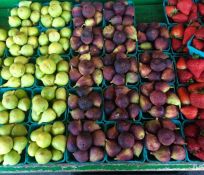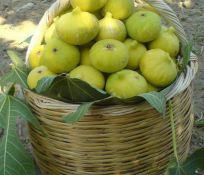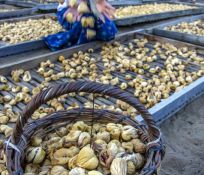Fig tree, a member of moraceae family, is also known as “Ficus carica.” Fig, named after the ancient settlement of Caria in Aegean Region, has a history of thousands of years in Anatolia and Aegean. It’s thought that the fig tree, which has a history of 80 million years, has more than 750 species. Fig tree, which has an ecosystem of its own, has been classified as a “primary source” by ecologists. Fig tree, accepted as “Tree of Heaven” in all religions, has always had a place of its own in human culture. Adam and Eve used fig leaves to cover their nakedness in the Garden of Eden. The fig tree, because it provided Adam and Eve with leaves, was rewarded by God with the ability to produce fruits that can be eaten. One of the four items Adam had when he left the Garden of Eden was a fig leaf.
In Torah, it is mentioned that the excellence of humanity is related to fig. King Solomon wrote down praises and songs for fig. The Jews celebrate Pesach (Passover), and the Christian celebrate Christmas with the traditional heaven’s fruit fig. In Koran, in Surah At-Tin God swears upon fig by saying “by the fig, and the olive.” Prophet Muhammad, in one of his hadiths, said “If a Fruit ever descended from Paradise, I would say that this is it, as heaven’s fruits contain no pips. Eat from it…”
Fig had been a symbol of abundance in Ancient Greece and Egypt. According to mythology, Dionysus, who fell in love with a fairy named Syka, turned the fairy into a fig tree when he was drunk. Dionysus is pictured with fig leaves as well as vine leaves. Herodotus mentions that fig culture in Anatolia is as old as human culture. Also, in Lydia it was considered as one of the ten basic foods of life. The fig is also mentioned in Homer’s Odyssey. Fig was gifted to the athletes who won in Olympic in Ancient Greece. In Ancient Egypt monks were fed figs when they started their training and dried figs were left in Pharaohs’ tombs. Fig is also mentioned in 5000 year old Sumerian sources. One of the Seven Wonders of the World, Hanging Gardens of Babylon, has fig trees in its gardens. In Indian “Legends of Mahabharata”, Vishnu, the god of gods, is depicted as a fig tree. Lord Buddha gained enlightenment under a fig tree (Bodhi tree).
According to Roman Mythology, Remus and Romulus grew up by sucking milk from a she-wolf under the fig tree in the Roman square. In Rome, the symbol of richness and power was to obtain fresh fig. The fig tree, the symbol of abundance and wealth, also known as the world tree that connects heaven and earth, has a distinguished place in Turkish Culture as well. Fig, which was named “encir” during Uyghur Turks era, later was found as “incir” in documents from Beyliks period. In Anatolia it was also called “yemiş”, “ballıdarı”, and “bardacık” by the public. The highest quality figs in Turkey, which is number one in fig production in the world, are produced in The Great Menderes Delta in Aydın region. Aydın, with its 73% share, is number one in fig production in Turkey. The fig research institute, one and only in Turkey and in the world, was established in Aydın in 1938 with Mustafa Kemal Atatürk’s initiative. The institute, which makes research on the genes of the figs that exist in Anatolia, studies 273 different fig species.









